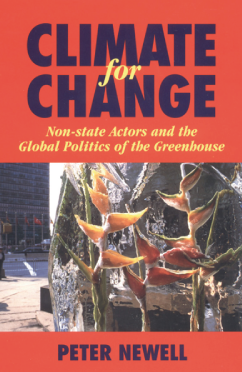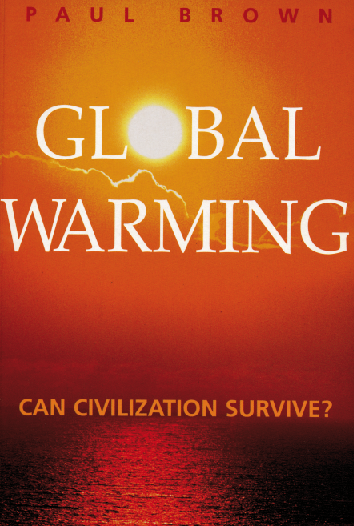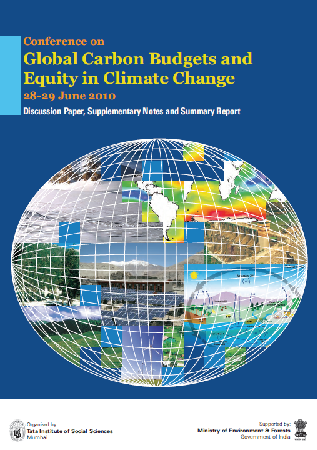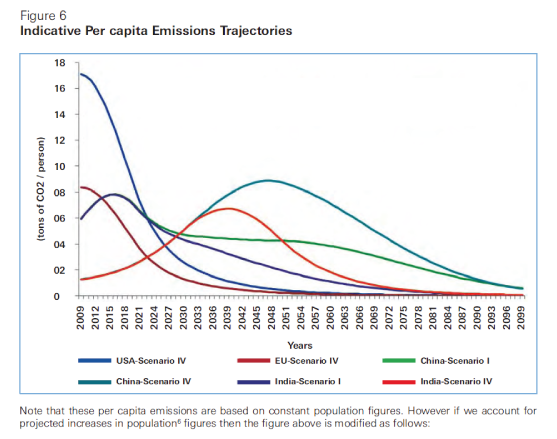Numeraire d'Mammon This coin was acquired recently from a wandering goldsmith in the Languedoc region of France. It shows the two sides of a rare 2-Pound Sterling coin that has been sawn away to reveal how 'evolution' - Darwin opposite the Ape - on one side of the coin, cuts through the image of Elizabeth Regina [ER] on the reverse side of the coin. In the 12th and 13th Centuries, the Cathars lived in the Languedoc region and they rejected the teachings, authority and corruption of the Catholic Church citing Matthew 7:22: -
"No man can serve two masters: for either he will hate one and love the other;Choosing Mammon, in 1209 the Church launched the Albigensian Crusade, which led to the brutal slaughter of thousands of Cathar men, women and children. It was the only crusade declared by the Catholic Church against fellow Christians. This was followed by the more systematic Inquisition which lasted until the 19th Century.
or else he will hold to one and despise the other. Ye cannot serve God and Mammon."
In 1244, after a 10 month siege of Montsegur, the Cathars there surrendered to the crusaders. In a single incident, 220 were burned at the stake here for refusing to accept Catholic orthodoxy.
400 years later Voltaire observed never was there anything as unjust as the war against the Albigensians
Today, the force with which the tenets of economic orthodoxy are held, is no less fierce than the grip of the Catholic orthodoxy in the Thirteenth Century and today, the City of London [CoL] has an independent status equivalent to the Vatican. The web of off-shore flight capital centered on CoL keeps tax-free trillions circulating beyond any statutory control anywhere, sausing massive economic damage. However, the scale of impacts invoked today by anthropogenic climate change dwarfs this slaughter and has created what Ban Ki Moon recently called 'a global suicide pact'. As in 1929, these same economic tenets resulted in the global economic crash of 2008. The economist-bankers instrumental in this latest crisis, also shielded by the the 'blind-eye' and private status of the US Federal Reserve Bank, plundered the global economy. This has been critically assessed in the recent Oscar-winning documentary Inside Job. However, as the film shows, while they fraudulently amassed private wealth at public expense, some of these same economist bankers like Larry Summers President of Yale, still hold top positions in the US Government. This augurs badly as we seek to address supposedly the 'greatest market-failure in history', global climate change. The NEED bill introduced to the US Congress by Dennis Kucinich, advised by the American Monetary Institute, seeks to redress this by putting the Federal Reserve under the political control of the US Treasury and putting an end to the financial crimes against humanity of Wall Street banks that are at the core of this 'global suicide pact'. Its a very big issue and with 'pulling rank on the Fed and trying to put it under political control, we may have been here before.
~~~~~~~~~~~~~~~~~~~~~~~~~~~~~~~~~~~~~~~~
Then there's the small matter of 'the reserve currency' and 'how money is made'
Some say its like this, which others might feel is a little harsh - who can say?

C&C's 'framework-based-market' establishes the principle of 'per-capitalism'. Following this same economic orthodoxy using the monetary unit to establish 'market-values', the late Professor David Pearce a UK economist based at UCL, with his colleagues carried out a Global Cost/Benefit Analysis [GCBA] of Climate Change between 1993 and 1995, in preparation for the IPCC Second Assessment Report [SAR]. This GCBA asked whether it was it cheaper to avoid climate change by controlling the human emissions causing it, or to take the hit from failing to do this. In short, it was a monetized attempt to answer the question posed in 1991 by William Nordhaus, another economist at Yale, in his land-mark paper on the economics of the greenhouse effect To slow or not to slow. To the extent of limiting the rise of atmospheric GHG concentrations to no more than doubling the pre-industrial CO2 high-point of 280 parts per million [ppm], the results of the GCBA showed that the costs of controlling GHG emissions, would exceed the value of the climate change related damages from failing to do this - in a phrase, it was cheaper to take the hit. Moreover, valuing all the assets at risk as being proportional to the income of the owners of the assets at risk, the exercise inevitably demonstrated the fatal discrimination that attended GCBA: - with the monetary unit as the 'numeraire' [the unit of measurement], on average fifteen dead poor people had the same 'statistical-life-value' as one dead rich person. In their scenario, the mortality projections with these valuations showed that many and mostly poor people would die directly as a result of changing climate. When these were combined with the over all result that it was cheaper to allow rather than control the emissions causing climate change, GCI felt there was clear cause to call this GCBA the economics of genocide This was like saying, "You don't get to live, because you're not worth it." Politically this was leading towards failure at the UNFCCC and 'mutually assisted suicide' - what Ban Ki Moon has now called a 'global suicide pact'. So, during the years 1993-1995, GCI conducted a campaign focused to disestablish the primacy of the 'numerarie d'Mammon' and to discredit GCBA. We sought to establish instead the primacy of C&C as the numeraire for the path to UNFCCC-compliance and some success was achieved with this. By early 1993, David Pearce had replaced William Nordhaus in the IPCC assessment. Nordhaus had already argued that it was cheaper not to slow. He had also said that adapting to climate change in the US would be eased by air-conditioning and the shopping malls being built there. These arguments were considered as provocative and he was replaced. On the 'numeraire' Nordhaus argued on page four of the document hereThe economic perspective in cost-benefit analysis attempts to condense the complex set of impacts over space, time and sectors by summarizing them in a scalar measure of value; others prefer to keep the measures in the original and undigested vectors of impacts. The fact that the scalar is in monetary units is not really crucial, it could be in *spotted-owl equivalents* if you preferred.GCI responded by asking in return on pages 26 and 27 of the document here: -"why, if a spotted owl equals a spotted owl, does not a human equal a human."Since the question was never answered, with significant input from the Corner House, GCI re-assessed the economists work and then helped to organize the Indian Government reception for GCBA at COP-1 in Berlin in 1995 with their letter to all delegations rejecting it - see pages 6 and 7 of the document here"We unequivocally reject the theory that the monetary value of people's lives around the world is different because the value imputed should be proportional to the disparate income levels of the potential victims concerned."GCI's solution to this numeraire crisis was indeed 'Contraction and Convergence' and in 1995 at COP-1, advocacy of C&C by the Indian Government, was clear in their Environment Minister's speech see pages 3, 4, 5 and 13 of the document here"Ladies and Gentlemen, we face the actuality of scarce resources and the increasing potential for conflict. Policy instruments such as tradable emissions, carbon taxes and joint implementation may well serve to make matters worse unless they are properly referenced to targets and time tables to be observed by those responsible for the damage to the atmosphere and biosphere. Protecting the world's environment requires that development be sustainable. It also implies the implementation of a programme for convergence at equitable and sustainable par values for use of environmental space on a per capita basis globally. In our view equal rights to carbon usage is fundamental to the Convention. The social, financial and ecological inter-relationships of equity should guide the route to global ecological recovery."GCBA was subsequently repudiated in the Summaries for Policy Makers in the IPCC SAR in 1995 see pages 14 - 16 of this document but David Pearce called this a clash between 'political correctness' and 'scientific correctness' and dubbed the campaign to expose GCBA and the valuation assumptions behind it as, "the stupidest campaign in history." Gradually this whole affair generated quite a reaction. It was also written up by academics and journalists - for example: -Unsurprisingly, while in relation to the objective of the UNFCCC economists continued to say that the relevant numeraire was the directionless dollar [monetary unit] in the derived 'market-based-framework' of GCBA and the inadequate Kyoto Protocol followed from this, a result was achieved at COP-3 in Kyoto in December 1997 for the 'framework-based market' of C&C where the transcript of the final session shows this in how the US responded to the Africa Group: -
"A powerful counterpoint to the insider/outsider or concentric circle formulation of influence is the case of Global Commons Institute (GCI). GCI takes as given that economic growth is driving the global community over the thresholds of global ecological stability (GCI 1994:7) and that there is a need to move immediately towards a minimum 60 percent cut in global CO2 emissions. However, it admits that the structural and restructuring implications of this are great. GCI first became involved in the climate debate by challenging the use by IPCC Working Group 3 of cost-benefit analysis as the means by which to assess the worth of different policy options. In this sense GCI was directly confronting a given' of environmental policy-making: the use of cost benefit analysis for the economic costing of policy options. It could therefore be expected that it would find success hard to achieve. However Peter Sturm, head of the OECD's resource allocation division, said that, GCI should be very pleased with the influence they had in the IPCC WG3 debate on cost-benefit analysis. Critiques provided by GCI resulted in many LDCs calling for the withdrawal of the chapter by David Pearce on the economics of climate change. GCI was therefore successful in challenging the prevailing assumptions in the policy debate about how to value action on climate change, nurturing a more normatively grounded discursive terrain subversive of the previously assumed legitimacy of cost-benefit analysis. GCI has also achieved success in promoting its`contraction and convergence 'approach whereby the highest emitters have to contract their emissions of CO2 and the lowest emitters are permitted to increase their emissions, converging on an optimal level of carbon usage that would prevent dangerous interference with the climate system (the stated goal of the convention). The idea has been carried forward by a number of LDCs as well as attracting the support of Northern sponsors (Corner House 1997). The parliamentary group GLOBE (Global Legislators for a Balanced Environment) adopted the idea and actively promoted it in the climate negotiations, providing a key platform for GCI in the policy debate. The alliance between GCI head Aubrey Meyer and Tom Spencer MEP, head of the GLOBE grouping in the EU, in particular, has provided GCI access both to key decision-makers and the resources and formal respectability that are associated with an accepted and established group such as GLOBE. The influence that such a small and poorly resourced group can have upon policy, suggests that access to and reserves of resources do not, of themselves, confer influence. So whilst the system that operates at the UN is likened by Chatterjee and Finger to the US model of participation in the policy process, where access to capital and a professional modus operandi are prerequisites for influence, the GCI example does seem to illustrate that even when these conditions are not satisfied, influence can be exerted."
Climate Change: Non-State Actors and the Global Politics of the Greenhouse
"The draft acknowledged that 85% of all land lost due to sea level rise & 78% of the extra deaths would be in developing countries, but stuck to the argument that in monetary value developed countries would lose far more. Envrionnmental campaigners were enraged. Aubrey Meyer for the tiny green group the Global Commons Institute, took them on in July 1995 at a a meeting for policy-makers in Geneva. He questioned the concept of life being more valuable in on country than anolther. Surely, if ethics rather than economics ruled, then life in the developing world would have been valued identically and the the sums would have worked out considerably differently. Ethics, which have so far come a poor third to politics and economics in the climate debate, did better on this occasion. Thanks to the intervention of Mr Meyer, the economics chapter was heavily questioned by Cuba, Brazil, China & Peru. Although the calculations remain, the UN refused to accept the conclusions in its summary report. It ways simply 'the value of life has a meaning beyond monetary value'. That sort of intervention throws out traditional monetary calculations & accepted economic theory on which the world runs. It makes politicians on the right fear the environmental movement, which it regards as its political opponent. It also fears regulation, or what it regards as an excess of government introduced in the name of saving the planet."
Global Warming: Can Civilization Survive?
Paul Brown
But can costs and benefits ever be calculated on a value-free basis? Can one put an objective cash figure on the value of the human lives that will be lost as a result of the increased storm damage warming will cause, or on the extra deaths from disease? Is there a value-free monetary figure for the worth of the species that will become extinct and the coastal plains and islands that will be submerged by rising seas, particularly given the extreme amount of uncertainty about what will actually happen? Most ordinary people would say it was not possible to put a cash value on such things, but the Pearce team had lost the facility to think like ordinary people. The team members didn't see a problem because there was a standard CBA technique, willingness-to-pay, which they could use to prepare their valuations. As far as they were concerned, the benefit of stopping global warming circa 2050 was the total amount that those likely to be hurt by it in that year seemed likely to be prepared to pay to stop it happening. Naturally, as poor people in poor countries can't offer to pay very much to save themselves, the team valued deaths and damage affecting them at much less than deaths and damage in wealthier parts of the world. This grossly distorted the international distribution of the cost of warming in their chapter which, when it was published in draft in 1994, purported to show that the industrialized countries, the ones causing the damage by their heavy fossil fuel use, would suffer twice as much from warming as the rest of the world put together. This was despite the fact that 85 per cent of all the low lying land lost as a result of rising sea levels would be in non-industrialized countries, as would three quarters of the reductions in fresh water supplies, and 78 per cent of the extra deaths. Aubrey Meyer was outraged when he saw that the team had valued a life saved in China or India at $100,000, a fifteenth of the value of lives saved in Europe or North America, and he began circulating a letter to eminent people all over the world, protesting what he called "the economics of genocide." His "silly campaign of misinformation and abuse," as Pearce later described it, collected five hundred signatures in support, some from authors working on other chapters of the IPCC's Assessment. This meant that when the IPCC tried to get national delegations to approve the Assessment as a whole at a meeting in Geneva in June 1995, there was so much unease about the Pearce chapter that the chairman, James Bruce of Canada, sent the Policymakers' Summary, the only part of the report over which the IPCC had control (tbe contents of the chapters were the responsibility of the writing teams alone), to a private, governments-only committee for consideration. The committee's recommended re-wording of the Summary, with the disputed valuations still intact, came back to the full meeting only ten minutes before it was due to end. A vote was taken to approve the entire Assessment as a package, and Bruce quickly gavelled the meeting closed, ignoring the Cubans who had been waiting to speak. When this was pointed out, Bruce was obliged to re-open the meeting. The Cubans then rejected the amended wording outright because GCI's arguments had not been answered. At this point, Brazil backed the Cubans with a formal protest, and Bruce had no option but to call a special meeting in Montreal in September 1995 to settle the issue. Several unsuccessful attempts were made to get the Pearce team to modifY its draft chapter in the three months between the Geneva and Montreal meetings. "We won't be revising it," the New Scientist quoted Pearce as saying.' "This is a matter of scientific correctness versus political correctness." Similarly, when the British Government's chief adviser on sustainability, Sir Crispin Tickell, the former diplomat who had aroused Margaret Thatcher's interest in environmental issues, wrote a friendly letter to Pearce in which he referred to the value of a statistical life and the willingness-to-pay method as "economists' artefacts," an illtempered reply came back saying Sir Crispin was "wrong on every point." Tickell later described the valuations as "ludicrous" and wrote to the IPCC to protest. When further pressure on the Pearce team failed in Montreal, the IPCC had the choice of dumping its chapter entirely or leaving its figures out of the Policymakers' Summary. In the event, the chapter was retained but the Summary effectively disowned it by stating in the course of a detailed critique that "the value of life has meaning beyond monetary value."
The Growth Illusion
Richard Douthwaite There is also extensive coverage of this whole episode here and even a praise-poem here" . . . . It does seem to us that the proposals by for example India and perhaps by others who speak to Contraction and Convergence are elements for the future, elements perhaps for a next agreement that we may ultimately all seek to engage in . . .GCI went further and said the economist's numeraire of preference, in the 'market-based-framework' of GCBA and the Kyoto Protocol, amounted to 'Guesswork' and not a 'Framework'. By contrast GCI said C&C shows that, as in music, C&C is a non-random and constitutional framework-based-market. It is carbon per person per unit time subject to the objective of the UNFCCC that is the numeraire relevant to the framework of cognitive resonance needed for full-term UNFCCC-compliance. Thus, rooted in stringularity, C&C's 'framework-based-market' establishes the principle of 'per-capitalism'. GCBA with all its hidden assumptions about 'who values' what has 'value' and how this is 'added', 'contingent-valued' or devalued and discarded, might be of relevance to implementation at the margins of an unquantified and structureless event in the status-quo, but it is not to directional strategy. GCI still maintains that unless and until this fuzzy 'numeraire d'Mammon' of economics and its 'framework' of GCBA is subordinated to C&C's fundamental and stable numeraire of UNFCCC-compliance, we will all - rich and poor - become ever more deeply caught in the margins of UNFCCC-non-compliance, 'green-wash' and 'death-wish', the economics of genocide and even what UN Secretary General Ban Ki Moon is now calling a global suicide pact. In 2006, the economist Lord Nicholas Stern, after a long period at the World Bank where he ignored climate change, woke up to it. Some have claimed this changed things for the better, as 'an economist' had finally persuaded people in a language they understood, that unmitigated climate change was a cost and not a benefit and so must be faced and dealt with. A language they understood and better late than never - who can say? In Stern's reading, the 'numeraire' became increasingly unstable, both in the quantum of the contraction event required for UNFCCC-compliance and the international 'sharing of this event. Over several months Stern's position was erratic. He unwound a string of conflicted positions on C&C where it was variously: -This unfolding list of non-sequiturs led to confrontational proposals like the 'Greenhouse Development Rights' [GDRs] promoted by EcoEquity and the Stockholm Environment Institute [SEI] and more recently the WBGU. In these, convergence is taken to the extreme of negative emissions entitlements for Developed Coutries by around 2030 [see Ch. 9 of this animation]. However, it transpired even this wasn't where it ended with Nicholas Stern as it was all prior to his famous off-the-record interview to camera in Poznan at COP-14 in 2008. Although already on the UK Government's negotiating team, he said to camera that he was inclined to support the new extreme position of Indian Government where developed countries should have negative emissions entitlements with immediate effect. This, in the year the UK Climate-Act was passed with C&C emissions contraction and convergence to equal per capita by 2050, was the most extreme proposal yet in the debate. This was deeply irresponsible and provocative. It was like re-conceiving the UNFCCC as a 'Versailles Treaty' as a vehicle for climate reparations to be paid by 'guilty-parties' to the UNFCCC like the USA and the UK.
- 'an assertion, not an argument' [See his Review of 2006]
- nothing to do with GCI - this was sorted out with the help of CUP and the UK Treasury
- 'too difficult to get your head around' though it had 'strong ethical attractions' [pp 586-9].
- 'a spectacularly weak form of equity' [Conference Sweden Chaired by former USG UN Nitin Desai]
- 'a pragmatic principle of equity" [UK Progressive Heads of Government Conference 05 March 08] and
- denounced in the American Economics Review, [in May 2008] 'does not C&C create rights to kill'?
Stern claims he was just making 'an ethical point'. But was his 'repositioning' exercise made in anticipation of this quasi-conflict-provoking intervention from the Tata Institute of Social Sciences [TISS] in Mumbai, India, in June 28-29, 2010 one wonders?
The TISS Report
Is the 'Rest of the World' [ROW] considered relevant by these TISS analysts?
In case the 'Rest of the World' [ROW] is considered relevant by TISS analysts, for the global budget that gives a UNFCCC-compliant result for atmosphere GHG concentrations, we assign ROW 50% of the global budget for 2050. Consequently, the total value for emissions in 2050 spreads roughly as follows: -
- India - 2.18 Gigatonnes [GTC], four times its present output and equal to a third of the global total
- China - 1.09 GTC, equal to its present output and one sixth of the global total
- The EU - 0.07 GTC, four percent of its present output one percent of the global total
- The USA - 0.04 GTC, two and a half percent of its present output and one percent of the global total
- The ROW - 3.38 GTC, a bit more than it present total and fifty percent of the global total
However, then contradicting this, TISS essays a 'global emissions budgets' that will peak at between 10 and 12 GTC annually and somewhere between 2010 and 2050, like this: - TISS then define the consequences for the atmospheric concentrations of CO2 and temperature as being somewhere in these values: -
TISS then define the consequences for the atmospheric concentrations of CO2 and temperature as being somewhere in these values: -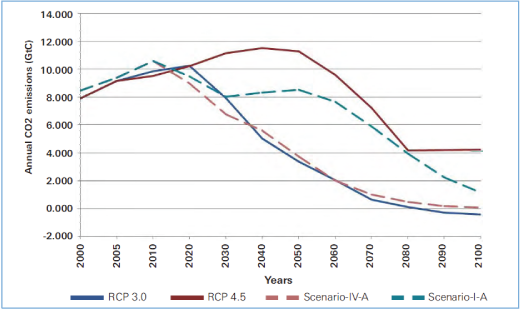 Under TISS's lower scenarios, where they say we have a 40 - 80% chance of exceeding two degrees anyway, on the sharing arrangement they essay above, India gets around 90% of the availble global budget as an annual amount by 2050. So, one wonders whether a delegation from TISS, perhaps led by Lord Nicholas Stern of the fuzzy numeraire himself, will go to the US Senate to argue this way for this international sharing of the TISS emission budgets? If it does, it will be more memorable than Greenpeace dumping tonnes of coal merely on the steps of Capitol Hill in 1997 to protest against what they called the 'Bird Brained' Byrd Hagel Resolution. Maybe this is what Stern really means when he laments that C&C is, 'just too difficult to get your head around'?
Under TISS's lower scenarios, where they say we have a 40 - 80% chance of exceeding two degrees anyway, on the sharing arrangement they essay above, India gets around 90% of the availble global budget as an annual amount by 2050. So, one wonders whether a delegation from TISS, perhaps led by Lord Nicholas Stern of the fuzzy numeraire himself, will go to the US Senate to argue this way for this international sharing of the TISS emission budgets? If it does, it will be more memorable than Greenpeace dumping tonnes of coal merely on the steps of Capitol Hill in 1997 to protest against what they called the 'Bird Brained' Byrd Hagel Resolution. Maybe this is what Stern really means when he laments that C&C is, 'just too difficult to get your head around'?
Is it 'fair' and 'who thinks so' - who can say? However, this way of arguing is confrontational and quite divorced from the UN Secretary General Ban Ki Moon's 9 point warning in Davos 2011: -To argue that while Indian emissions-rights give life, US emissions-rights kill, is provocative and self-defeating. It is how to ensure global disagreement for the rest of the time that is left to avoid dangerous rates of climate change. The argument is obviously made in a two-way street and global emissions rights projected in this extreme and divisive way are not so much 'rights-to-kill' versus 'rights-to-life', as the destruction of all rights as we prepare to act out the global suicide pact. The parallels between 1929 and the present time are disturbing. In both cases, global economic depressions were triggered by huge malpractice on Wall Street. The punitive terms of reparations in the Versailles Treaty imposed on Germany combined with the 1929 crash leading directly to the rise of fascism and World War II. The present attempt to turn the UNFCCC into a Versailles Treaty on climate change, combined with the recent economic crash, will lead again to conflict. This chaotic Darwinian model of 'the survival of the fittest' informs the 'economics' of climate change. Unless we subordinate its numeraire - the monetary unit - to C&C, the numeraire of UNFCCC-compliance and a rational compromise, the above suggests that economic failure and unresolved climate change will show that we are not fit to survive and that we won't. This is something the NEED Bill should address. As someone might have said, 'global environmental limits have political and economic consequences' and in some ways, all the positioning exercises in the climate-economics of genocide over the years have really been about 'who gets to die and why'. The Indian Environment Minister Kamal Nath foresaw this madness at COP-1 in 1995 as leading to, " . . . the actuality of scarce resources and the increasing potential for conflict". To avoid this, what Kamal Nath said [pp 3-5] was: -
- We mined our way to growth.
- We burned our way to prosperity.
- We believed in consumption without consequences.
- Those days are gone.
- In the 21st century, supplies are running short and the global thermostat is running high.
- Climate change is also showing us that the old model is more than obsolete.
- It has rendered it extremely dangerous.
- Over time, that model is a recipe for national disaster.
- It is a global suicide pact.
Now, in seeking to stop this increasing potential for conflict, the Australian economist Ross Garnaut seems more measured with his proposal 'Towards Global Agreement' and this makes C&C seem moderate, rational and negotiable: -
- Policy instruments such as tradable emissions, carbon taxes and joint implementation may well serve to make matters worse unless they are properly referenced to targets and time tables to be observed by those responsible for the damage to the atmosphere and biosphere.
- Protecting the world's environment requires that development be sustainable.
- It also implies the implementation of a programme for convergence at equitable and sustainable par values for use of environmental space on a per capita basis globally.
- In our view, equal rights to carbon usage is fundamental to the Convention.
- The social, financial and ecological inter-relationships of equity should guide the route to global ecological recovery."
- "The contraction and convergence approach addresses the central international equity issue simply and transparently. Slower convergence (a later date at which per capita emissions entitlements are equalized) favours emitters that are above the global per capita average at the starting point.
- Faster convergence gives more emissions rights to low per capita emitters.
- The convergence date is the main equity lever is such a scheme."
The biddable reponse to this from the Chinese Covernment was stated here in July 2009: -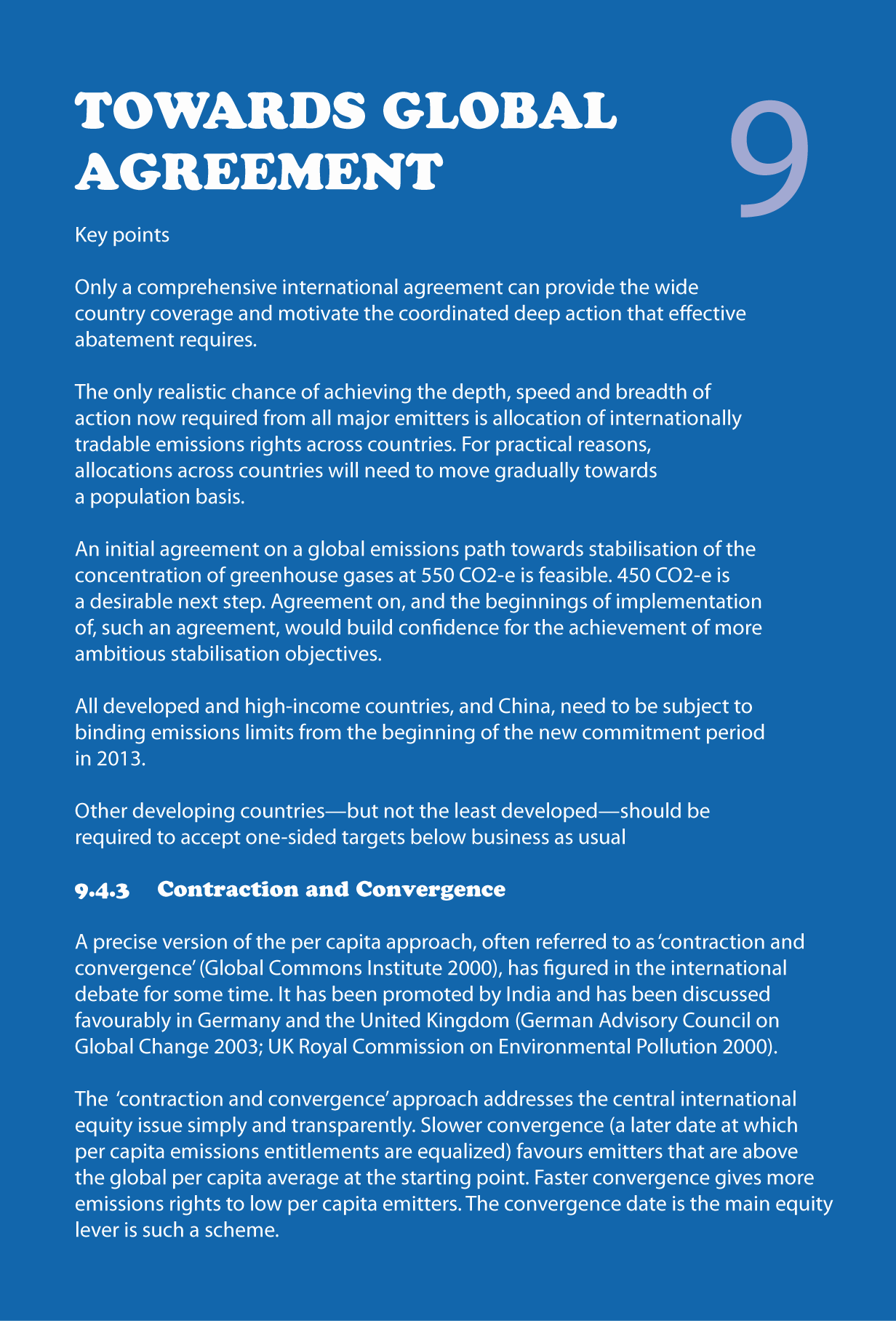 Contraction and convergence
Contraction and convergence
Since the principle of contraction and convergence was first proposed by the Global Commons Institute in 2000, it has been widely embraced by some industrialised countries. Under contraction and convergence, each country will start out with emission entitlements equal to its current real emissions levels, and then, over time, converge to equal its per capita entitlements, while the overall global budget contracts to accommodate the emissions reduction objective. The convergence principle should be applied immediately rather than later as the converged point in the future. Real emissions is a different concept to emissions entitlement. A country's high/low per capita real emissions cannot justify its high/low emission entitlements. In the process of convergence, the rights and interests of country B are really infringed by country A. In the NEA-based solution, the concept of convergence can still be incorporated, but it now merely means convergence of real emissions rather than convergence of emission entitlements. Each country's gaps between its emission entitlements and real emissions need to be balanced by the traded emissions quotas.
Greenhouse gas emissions reduction - A theoretical framework and global solution
Development Research Centre, State Council People�s Republic of China 2009 This is nicely illustrated here in this Introduction Movie from the CandC Foundation: -. . . . and illustrated here with more examples of the rates of C&C in this animation from GCI: -
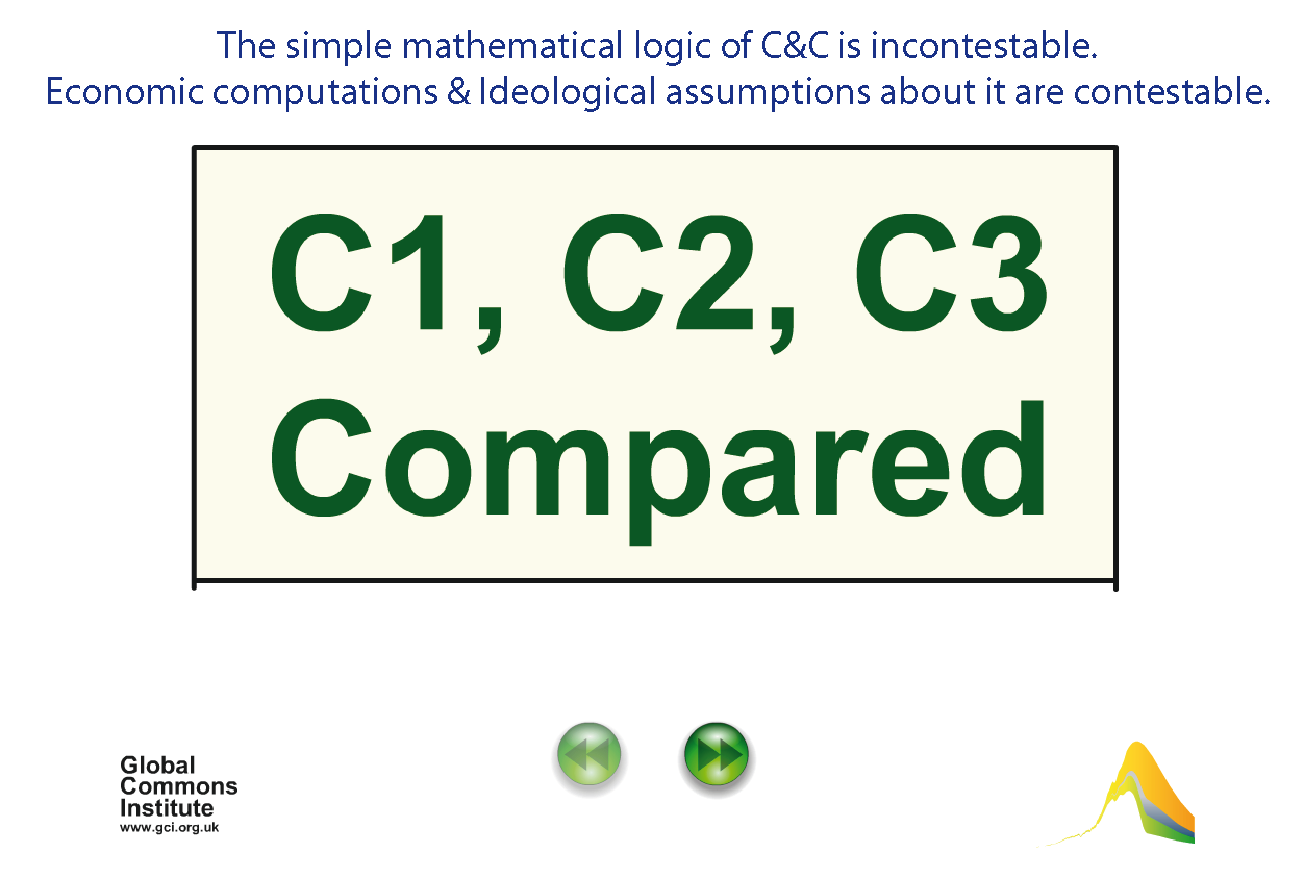
For UNFCCC-compliance, C&C is the 'unit-of-measure, not 'money'



